The anniversary of a 150-year-old church highlights the heritage of inclusivity as the nation celebrates Juneteenth.
FAITH GREEN TIMMONS
Michigan Conference Communications
There is a strong correlation between the increasing awareness of this nation’s newest federal holiday and the history of one of this state’s oldest United Methodist congregations, Boyne City’s Compass Community Church.
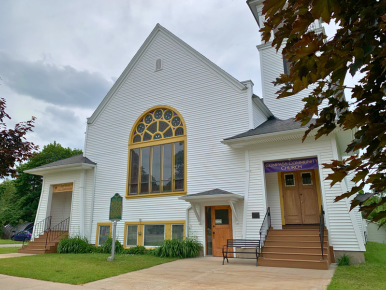
Juneteenth commemorates the day that black slaves in Texas learned that they had been set free. Due to the Confederate Army’s stronghold and the reluctance of slave owners, that message did not reach African Americans in bondage until June 19, 1865, two and a half years after President Abraham Lincoln signed the Emancipation Proclamation.
By 1883, less than 20 years after this historic event, black settlers in Michigan were doing well enough to generously gift a significant portion of their private property to build Boyne’s first Methodist church, known today as Compass Community Church. In 1906, the present building was constructed.
Zachariah and Mary Morgan, both people of color, were charter members of the congregation and cofounders of what was then the village of Boyne. As a married couple, the Morgans migrated to the region along with other black homesteaders, seeking a safe place to call home.
Zachariah was born free, and Mary Nevitt Morgan was a freed slave. They met and married while both families were living in Haiti. Eventually, Zachariah and Mary returned to the States and made their way to the Boyne area in Michigan. Still in its infancy, the former territory had recently become the 26th state to join the Union. The Morgans arrived in October 1870 among the earliest settlers, many of whom had been slaves prior to the Civil War.
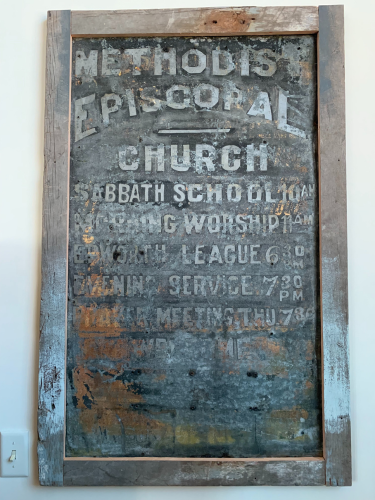
May 3 marked the 150th anniversary of the church they founded. Preaching on May 5, Pastor Sarah Hescheles shared:
Approximately 1,844 years after Jesus prophesied to his apostles that he would build his church on the firmness and strength of the soul of Peter, 12 faithful and obedient servants of God gathered together and formed the Deer Lake Class in Charlevoix County, Michigan.
Each man and woman who founded the Deer Lake Class followed in the footsteps of Abraham and Peter as they heard the call of God, received the call, left relatives and the households, and headed off to Northern Michigan.
Each man and woman who founded this Methodist class carried the stories and experiences of their lives and the stories of their ancestors with them into the emerging communities on the shores of Pine Lake — today known as Lake Charlevoix. They departed a land they knew and, upon setting up camp, came together to worship God.
The Morgans and their children were members of that first class. Their close-knit contingent of fellow Methodists of African descent found the area especially welcoming. Half of the first Methodists in the Deer Lake Class were black. They worshiped alongside their white brothers and sisters in Christ as one congregation. Their openness to embrace one another extended to the ready acceptance of the influx of European immigrants that followed. This helped foster the church’s continued growth, which reached its peak of about 600 members in about 1921. Before the Deer Lake Class was formed, the Morgans helped organize the prayer group that established the first Methodist church and was instrumental in shaping the village itself.
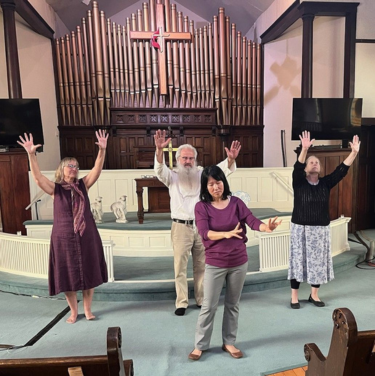
Zachariah Morgan and John Nicholls were some of Boyne’s first businessmen. They founded the Nicholls and Morgan Brickyard and platted the Village of South Boyne in 1878. As a man of deep and abiding faith, Zachariah Morgan shone the light of Jesus into the community in many ways, including establishing the first school district in Boyne and giving the land and brick building materials to construct a school in 1883. Furthermore, church records reference Zachariah’s father as the Rev. George Morgan. The recognition of a black man as clergy by a church organized in the 1800s is highly significant.
After her husband’s death in 1894, Mary Morgan continued managing the family farm and real estate that Zachariah left her. She also actively participated in the Methodist Church and the Women’s Christian Temperance Union, taught piano to children, and served as the community’s midwife. Zachariah and Mary Morgan were incredibly influential and well-respected within the emerging community.
The Morgan family’s faith-filled and faith-fueled contribution to the development of Boyne cannot be overstated and serves as proof that the pioneering village and its Methodist church were integrated from their inception.
However, turning to the light of Jesus as a guide, rooting actions in faith, and cultivating a spirit of unity that brought black and white people together in the late 1800s were not to be found in the lives of people in all areas of the country.
A spirit of rejection and denial, based on race, was the impetus behind the purposeful prevention of the release of black slaves in the state of Texas until 1865. While it has been said that there were rumors, they had no idea that a declaration from the government had freed them. Consequently, over 250,000 black people needlessly endured two more full years in bondage.
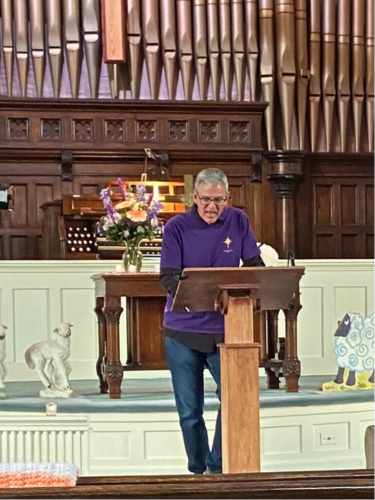
On June 19, 1865, two thousand Union troops arrived in Galveston with news of the executive decree. That day became known as Juneteenth, a term coined to celebrate the breaking of the Confederate stronghold that marked the beginning of Reconstruction. The intentionally uninformed slaves of Texas were the last in the nation to receive the word, and that grand day is now celebrated today as a federal holiday.
This Freedom Day marked a new era for the nation. It would not be long before the beneficial results of Reconstruction for blacks in the south began to mirror those of advancement for families of color, like the Morgans, in Boyne, Michigan. However, aggressive backlash against that early success sparked decades of violent intolerance and racial segregation.
Fortunately, the retaliation against black prosperity in the South is not a legacy known of Boyne. As late as the 1930s, members of the Methodist church fondly referred to their “checkerboard choir,” due to its strong mix of blacks and whites. Even as visible evidence of that early integration began to fade, the Methodist church kept the legacy of its rich, faith-based cross-racial history well documented. It is a legacy that they are continuing to share as Compass Community Church.
This month’s sesquicentennial celebration culminated with a booth at the Farmers’ Market, showcasing the church’s Off the Floor Ministry and Prayer Shawl Ministry, and community-wide events at the church, including BBQ lunch, revival, ice cream social, and Sunday’s celebration worship. The commemoration began in January of this year with the launch of a campaign called 150 Acts of Love. This compassionately creative movement started with distributing five commemorative plates throughout the community. Six months ago, members started passing out vintage dishes preserved from the congregation’s 1974 centennial celebration. They filled the plates with goodies and circulated them until this month.
Those to whom they were gifted were given only one stipulation: “Pass it on ‘filled’ with an act of love.” Each recipient was commissioned to demonstrate the same caring spirit that they were bestowed. Some examples of suggested acts of kindness were shoveling a driveway, visiting a neighbor, hand-delivering a card, or baking a treat to share. They were then asked to record the day and date of their deed in a notebook and ask the next recipient to do the same.
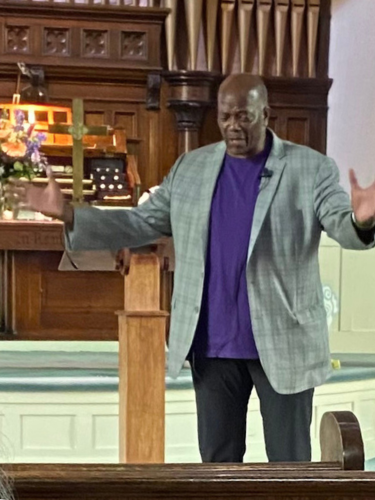
This campaign’s excitement was evidenced at the church’s June revival. Residents came from across the city to the BBQ lunch, catered by locals Scott and Jess Mania, the revival that followed, and the ice cream social. The weekend-long celebration was a success. Speaking of the well-attended events and reflecting on the church’s extraordinary roots, Roxanne Zell, co-lay leader at Compass Community Church, shared, “I am so humbled to think of everyone, throughout these past 150 years, who honored God by sharing His love, and who made it possible for me to continue worshiping God now!” She is one of many who were deeply touched.
Three preachers shared throughout the weekend. Rev. Gary Step, Rev. Rod Kalajainen, and Pastor Greg Timmons. “It was a blessing and a joy to be part of the celebration,” said Rev. Step, the Senior Director of Leadership Development for Michigan’s United Methodist Foundation. He loved the experience: “Folks that approached me after the service on Saturday shared that they appreciated my honest and transparent testimony.”
Rev. Step’s message was based on the parable of the lost sheep in Luke 15. At the heart of his message was the notion that sheep tend to wander. Especially when they realize that they are lost, they become agitated and disoriented. However, in the parable, the shepherd places the sheep on his shoulders to calm them down as he brings them back to the flock.
Rev. Step employed this powerful metaphor to help those listening envision Jesus as sitting at the table with outcasts and sinners. He explained that Jesus demonstrated to the disconnected that they are indeed loved and accepted.
Pastor Greg Timmons serves Flint’s Calvary-Hope Cooperative Parish. Both churches have been historically predominantly white congregations. He is the first black minister to serve either church. During his tenure, Flint: Charity UMC, a church with a long history of interracial mergers and cross-racial appointments, became a part of Calvary in a seamlessly loving merging. Pastor Timmons’ fiery preaching “brought the message on home,” with words encouraging everyone to look to the gracious and loving example of Jesus.
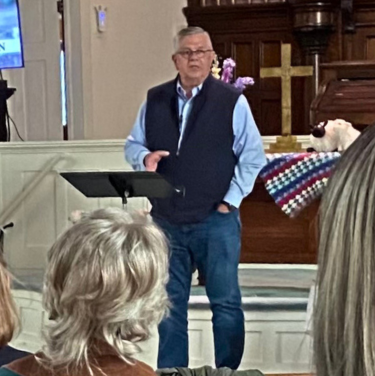
Compass’ celebrations and worship focused on telling “the old, old story” in a new way — one that never departs from the central message of Jesus and his love. That was echoed in many ways throughout the weekend of intergenerational worship experiences.
On Sunday, Rev. Rod Kalajainen reminded Compass Community Church of Jesus’ last words to his disciples and challenged Compass to do three things: love God, love our neighbors, and make disciples.
Together, Pastor Timmons, Rev. Step, and Rev. Kalajainen’s messages may be combined to give us this message: In life, we have the choice to grow closer to God and one another through all that we experience, to seek out people who do not know God and share with them how God longs to be in a relationship with them through accepting Jesus’ sacrificial gift upon the cross for the forgiveness of our sins, and to stay rooted in and guided by God’s Word as we love God, love our neighbors, and make disciples of Jesus.
What’s love got to do with it? Everything. “The sharing of God’s love has always been, and always will be, a vital part of this church,” said co-leader Carolyn Crumbacher. Sharing God’s love roots the mission and vision Compass Community Church leaders discerned over the last 18 months under the guidance of Rev. Kalajainen.
In selecting their 150th celebration theme of “What’s Love Got to Do with It?” members of Compass Community were prayerfully cognizant of the country’s present political climate and wars in the Middle East and Ukraine. The heightened division in the United States as the upcoming presidential election approaches made commemorating the church’s history and celebrating Juneteenth remarkably timely.
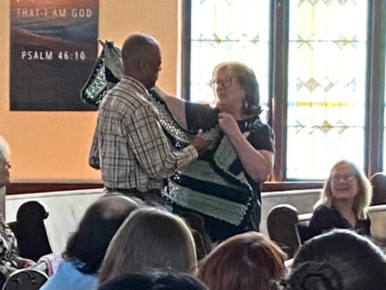
Dr. Stephen Robinson, the great-grandson of Zachary and Mary Morgan, attended the weekend of festivities. His presence is living proof of the powerful legacy of those faith-filled pioneers.
His great-grandmother, Mary, spent her final day on this earth singing hymns in the Methodist tradition, with members of this same church, just as Stephen did recently during worship services in May and June. On March 9, 1951, the 107-year old church matriarch said goodbye to her friends, laid down for a nap after their gathering, and peacefully transitioned into eternal rest.
Upon her death, The Michigan Christian Advocate quoted the church’s pastor, Rev. J. Marion DeVinney (patriarch of a family that remains an integral part of the Northern Michigan community as well as the Methodist connection) as saying:
“When one looks at the fact that Boyne City is unusually free of race prejudice, he does not need to look beyond this mother and her children who have been an inspiration to the community.”
Last Updated on June 25, 2024

